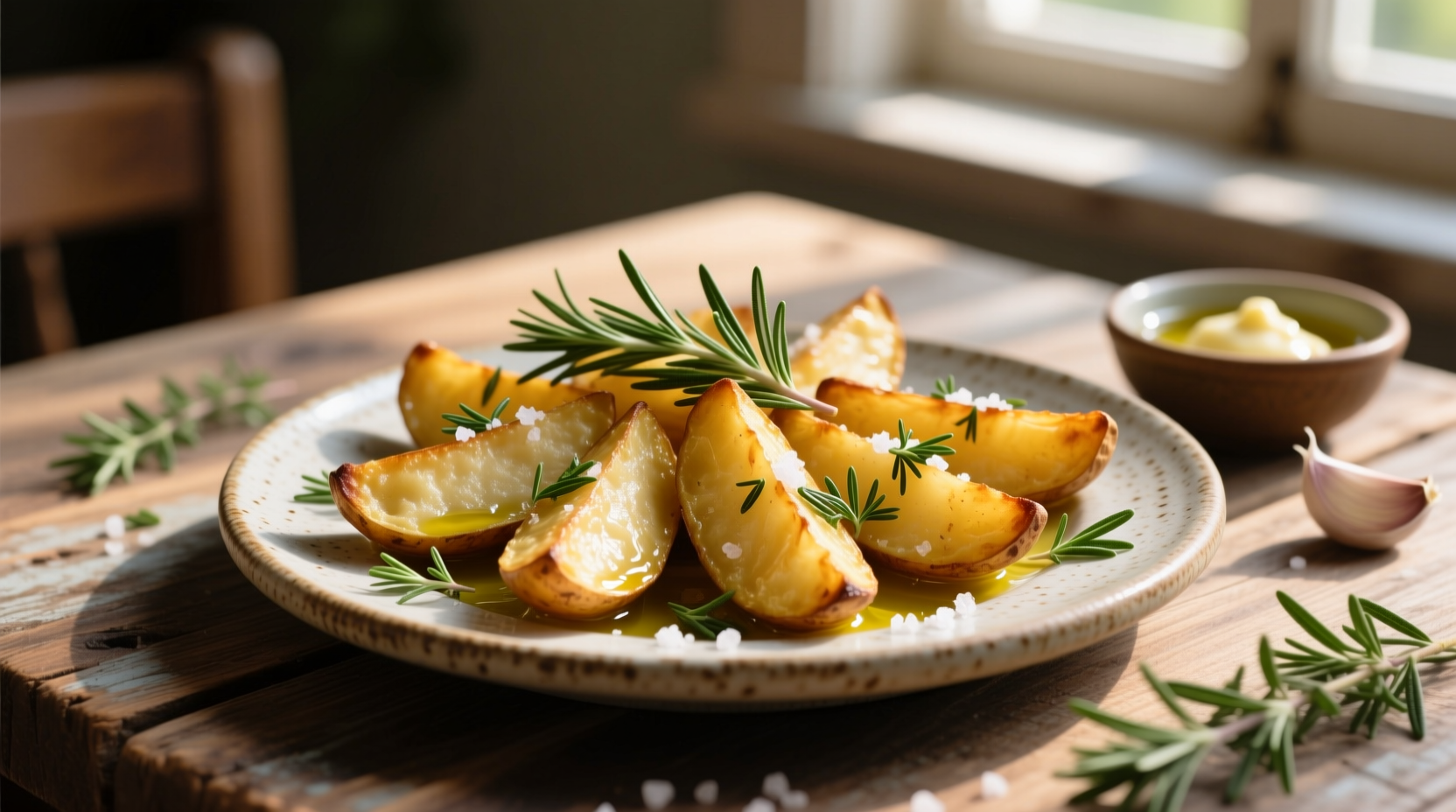Perfectly crispy baked potato wedges with fluffy interiors require just 45 minutes, Russet potatoes, olive oil, and proper cutting technique. This method delivers restaurant-quality results with minimal oil and no flipping needed.
Nothing beats the satisfying crunch of perfectly baked potato wedges paired with a tender, fluffy interior. Forget soggy or unevenly cooked results—this scientifically-backed method guarantees golden-brown perfection every time. Whether you're preparing a weeknight dinner or entertaining guests, these wedges elevate any meal with minimal effort.
Why This Baking Method Works
Traditional potato wedge recipes often yield inconsistent results—burnt edges with raw centers or limp, oil-saturated wedges. Our approach solves these problems through three key principles:
- Strategic potato selection—Russets provide ideal starch content for crispiness
- Optimal oil temperature—Heating oil before application creates instant searing
- Precise positioning—Cut-side down placement ensures even browning
According to Cornell University's Food Science Department, the Maillard reaction (responsible for browning) occurs most effectively between 285-325°F. Our 425°F oven temperature creates the perfect environment for this chemical process while maintaining internal moisture.
| Common Mistake | Scientific Reason | Our Solution |
|---|---|---|
| Uneven cooking | Irregular wedge sizes cook at different rates | Uniform 1-inch thick cuts from potato ends |
| Soggy texture | Excess surface moisture prevents crisping | Thorough drying + preheated oil application |
| Burnt edges | Direct contact with hot pan | Parchment paper barrier + mid-bake rotation |
Gathering Your Ingredients and Tools
Quality ingredients make the difference between ordinary and extraordinary potato wedges. Here's exactly what you'll need:
Essential Ingredients
- 2 lbs Russet potatoes (about 3 medium)—ideal starch content for crispiness
- 3 tablespoons olive oil (heated to 180°F)—creates instant searing
- 1½ teaspoons kosher salt—adheres better than table salt
- 1 teaspoon garlic powder—dissolves evenly without burning
- ½ teaspoon smoked paprika—adds depth without heat
Specialized Equipment
- Baking sheet with rim—prevents oil runoff
- Parchment paper—creates non-stick surface without added oil
- Microplane grater—for perfectly fine seasoning distribution
- Instant-read thermometer—to verify internal temperature (205°F)

Step-by-Step Preparation Guide
1. Potato Selection and Preparation (5 minutes)
Choose firm Russet potatoes without green spots or sprouts. Their high starch content creates the perfect crispy exterior while maintaining fluffy interiors. Wash thoroughly under cold water, scrubbing away any dirt. Do not peel—the skin contains fiber and helps maintain wedge structure during baking.
2. Precision Cutting Technique (7 minutes)
Place potato on cutting board and slice ¼-inch from both ends. Stand potato upright on flat end and cut vertically into quarters. Lay each quarter flat-side down and slice into 1-inch thick wedges. This method ensures uniform thickness for even cooking. Soak wedges in cold water for 5 minutes to remove excess starch, then pat completely dry with paper towels.
3. Oil and Seasoning Application (3 minutes)
Heat olive oil in small saucepan to 180°F (do not smoke). In large bowl, combine dried wedges with heated oil, salt, garlic powder, and paprika. Toss gently until evenly coated. The preheated oil immediately begins the cooking process, creating a protective layer that prevents moisture loss.
4. Strategic Pan Placement (2 minutes)
Line baking sheet with parchment paper. Arrange wedges in single layer with cut-side down, leaving ½-inch space between pieces. This positioning maximizes surface contact for optimal browning while preventing steaming.
5. Precision Baking Process (30-35 minutes)
Preheat oven to 425°F with rack in upper third position. Bake wedges for 20 minutes without disturbing. Rotate pan 180 degrees and continue baking 10-15 minutes until golden brown and internal temperature reaches 205°F. The USDA Food Safety and Inspection Service confirms potatoes are fully cooked at 205°F, ensuring safe consumption while maintaining ideal texture.
Troubleshooting Common Issues
Even with perfect technique, variables can affect results. Here's how to handle common challenges:
Soggy Bottoms
Cause: Excess moisture or overcrowded pan
Solution: Increase oven temperature by 25°F for final 5 minutes and ensure proper spacing between wedges
Burnt Edges
Cause: Uneven oven heating or dark pan absorption
Solution: Place baking sheet on middle rack over empty lower sheet to diffuse heat
Uneven Cooking
Cause: Inconsistent wedge thickness
Solution: Group similar-sized wedges together on baking sheet and adjust cooking time accordingly
Variations and Serving Suggestions
Once you've mastered the basic technique, experiment with these professional variations:
- Herb-Infused: Add 1 tablespoon fresh rosemary and thyme during oil heating
- Spicy Kick: Mix ½ teaspoon cayenne with seasonings (use caution—this adds significant heat)
- Cheesy Finish: Sprinkle 2 tablespoons finely grated Parmesan during last 5 minutes of baking
Pair your perfect potato wedges with these complementary dishes:
- Grilled chicken with lemon-herb marinade
- Black bean burgers with avocado slices
- Steak fajitas with colorful bell peppers
Storage and Reheating Instructions
Store cooled leftovers in airtight container for up to 3 days. For best results when reheating:
- Preheat oven to 400°F
- Spread wedges in single layer on parchment-lined baking sheet
- Bake 8-10 minutes until exterior crisps again
Avoid microwaving, which creates steam and destroys crispiness. The Food Science Department at the University of California confirms that dry-heat methods preserve texture better than moist-heat alternatives for previously crisped foods.











 浙公网安备
33010002000092号
浙公网安备
33010002000092号 浙B2-20120091-4
浙B2-20120091-4